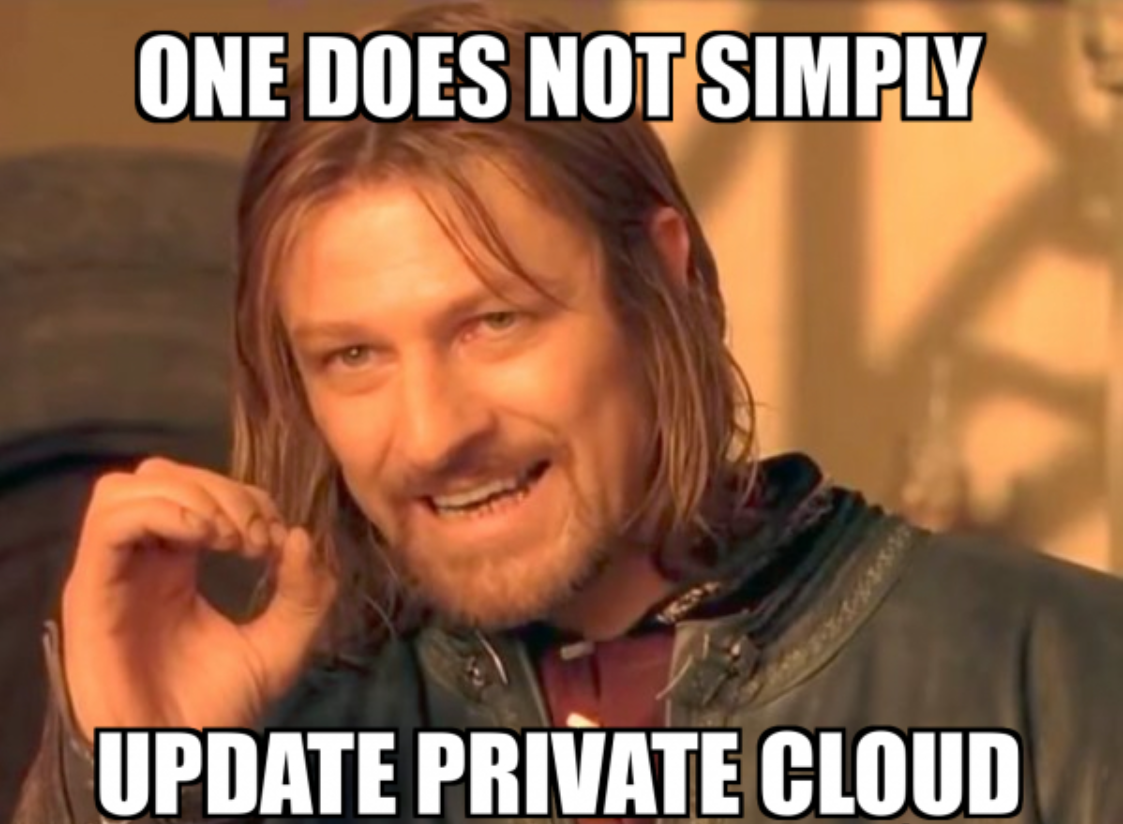How is GigaCloud revolutionising its private clouds and why does it matter
20.05.2022
Specialists of the GigaCloud cloud operator built their first private cloud in 2019. It is a physically isolated infrastructure with virtualization and a network stack prepared for the customer. It is provided to him for exclusive use under a service model with monthly payments.
The cloud operator's work does not end after building a private cloud and configuring it to meet the customer's needs. The technical support service and the operations department monitor the events and indicators of the cloud. Specialists make the necessary changes, help customers deploy virtual infrastructures and, what is very important, they update the cloud.
We shall tell you how we upgrade private clouds and why it is important.
Why should private cloud software be updated
You can draw a parallel with your phone or laptop, which you update from time to time. It would seem that your gadgets work without failures, and you are satisfied with the speed and quality of the functioning of programs, why should they be updated? When software developers discover critical vulnerabilities, security gaps, or add new features, make changes, etc., they release updates and offer to install them. Timely software updates ensure that you are using the most current version without bugs and vulnerabilities.
The same is with private clouds. We do not only build them, but also monitor the relevance of the software versions installed in them. In addition, we fully service them and, if necessary, update them. These updates close all known defects and bring new functionality. This is how we free our clients from routine IT infrastructure support tasks and give them the opportunity to focus on the development of their business.

How do we update our private clouds
A private cloud consists of the following various components: "iron" (hardware layer), virtualization management and virtualization. These three components are updated independently of each other. Specialists of the GigaCloud operation department have a plan according to which they take into account the release of new software versions and test them, and then update the hardware components. To do this, it is not necessary to stop the operation of the cloud.
We update the virtual environment management components separately. To do this, it is also not necessary to stop the operation of the cloud. If the private cloud infrastructure is built on the VMware virtualization system, we update the vCenter management system, with which we can centrally manage virtual machines. In a cloud which is built on the OpenStack platform, there is no such management system. OpenStack consists of various interconnected modules. One module is responsible for computing resources and their allocation, the second for disks, the third for authentication and authorization, and so on. We update these modules separately from each other. We also use the hardware compatibility list (HCL), and before updating, we check whether the software version to which we want to update one component is compatible with the old version of another component, so that they can interact with each other. If they are compatible, we update one module, then the second, the third, and so on.
How often do we update private clouds
IT specialists are divided into two categories. There are those who want to constantly update something, and those who say: If everything works stably, then let it work further. Both of them are right.
Today, all IT professionals in the world follow Agile and DevOps practices and release new applications and updates every two to three months. This approach is reasonable, and it can be explained by the fact that it is better to release software with small changes, and if a bug is found in it, it will not be so critical and will not affect the service as a whole. You can also understand those experts who say that it is not worth updating. But at the same time, if the code was considered reliable for 20 years, it is not a fact that it will remain so. They can find errors in it, by which the service can be “hacked”. Therefore, new patches or updates are released to close possible vulnerabilities.
At GigaCloud, we use the approach of updating to the second to the last stable version, as it has already been tested and has had its defects fixed. Updating to the latest version carries the risk that something will go wrong.

When we update the clouds urgently
But there are no rules without exceptions, we also update private cloud software to the latest version for many reasons, including customer requests. If after that we or our customer notices deficiencies in the operation of the system, we solve the problem together with VMware technical support. GigaCloud has the highest VMware Principal Partner, so the vendor develops updates or patches specifically at our request, and we can use them exclusively, even when they are not yet globally available.
Also in 2021, we received the status of a CCSP partner (Red Hat Certified Cloud and Service Provider) of the Red Hat company in Ukraine. Now we are building new private solutions on OpenStack with the support of Red Hat. If the client has any force majeure, we solve them with the help of the vendor's technical specialists. This is where Red Hat's OpenStack has the advantage over the "vanilla version" that is being developed by the community.
In addition, GigaCloud implements urgent updates. Specialists of the operation department constantly monitor the update of security bulletins of vendors. These are technical documents that contain information about discovered system protection flaws. As new vulnerabilities appear, experts close them immediately with patches and urgent updates according to the recommendations given in these bulletins.
GigaCloud specialists have built more than 20 private clouds for clients. We have previously explained which business should switch from a public cloud to a private cloud.






